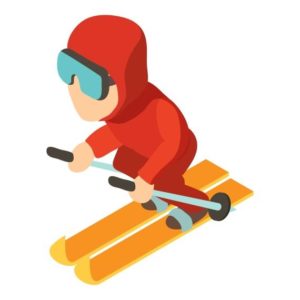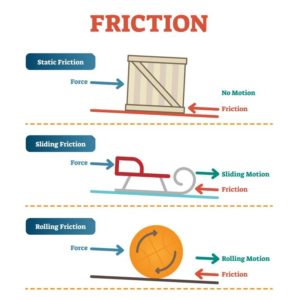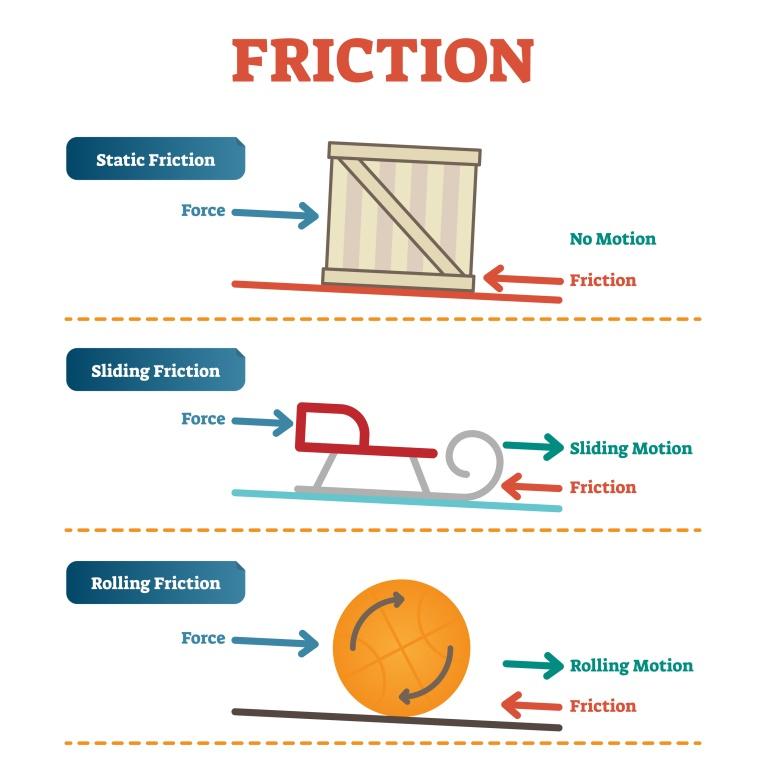Downhill Skier
In this lesson plan, students will learn about friction and force. Students will work in teams to design a skier out of everyday items that can race to the bottom of a classroom ski ramp the fastest.
Students will learn about
- Friction
- The engineer design process
Age Levels: 5-8
Build Materials (For each team)
Required Materials
- Video*: https://www.youtube.com/watch?v=BAV3DEfB7cM
- 4 Craft sticks

Lesson-Writer-Copyright-IEEE - 4 Plastic/Paper straws
- 2 Sheets Plastic wrap (8×12 inches)
- 4 Pipe cleaners
- Scotch tape
- 2 Sheets Aluminum foil (8×12 inches)
Testing Materials
- Ski Ramps (2) (smooth wood or plastic boards about 5 x 40 inches)
- Stopwatch or timer
*Video Source: NBC News Learn YouTube Channel
Materials
- 2 Ski Ramps (smooth wood or plastic boards about 5 x 40 inches)
- Stopwatch or timer
Design Challenge
You are a team of engineers working together to design and build a downhill skier out of everyday materials. Your goal is to have your skier reach the bottom of the ski ramp in the fastest time.
Criteria
- Not allowed to push the skier down the ski ramp
Constraints
- Use only the materials provided.
- Break class into teams of 2.
- Hand out some sheets of paper for sketching designs.
- Discuss the topics in the Background Concepts Section. Review the various concepts, especially friction and force. Give examples of how these terms apply in your classroom.
- Present the NBC News Learn’s Downhill Science of Alpine Skiing Video https://www.youtube.com/watch?v=BAV3DEfB7cM so students can learn about the forces that impact skiing and then lead a discussion about what the students learned from the video.
- Review the Engineering Design Process, Design Challenge, Criteria, Constraints and Materials.
- Instruct students to start brainstorming and sketching their designs.
- Provide each team with their materials.
- Explain to students that they will be designing two skiers using the provided materials. They will then choose the one which they think will achieve the goal of reaching the bottom of the ski ramp first.
- Announce the amount of time they have to design and build (25 minutes recommended).
- Use a timer or an on-line stopwatch (count down feature) to ensure you keep on time. (www.online-stopwatch.com/full-screen-stopwatch). Give students regular “time checks” so they stay on task. If they are struggling, ask questions that will lead them to a solution quicker.
- Students meet and develop a plan for their skier. They agree on materials they will need, write/draw their plan, and present their plan to the class.
- Teams build their designs.
- The ski ramp should be safely secured at about a 45 degree angle. Test the skier designs by allowing the students to let their skier go and time how long it takes for the skier to reach the bottom of the ramp, while staying intact. Students are not allowed to push the skier.
- Teams should document how long it took for their skier to reach the bottom of the ramp while staying intact.
- As a class, discuss the student reflection questions.
- For more content on the topic, see the “Digging Deeper” section.
Student Reflection (engineering notebook)
- What worked best about your design?
- What could you have improved?
- What did you learn from other team’s designs?
- How did you work as a team?
Time Modification
The lesson can be done in as little as 1 class period for older students. However, to help students from feeling rushed and to ensure student success (especially for younger students), split the lesson into two periods giving students more time to brainstorm, test ideas and finalize their design. Conduct the testing and debrief in the next class period.
- Define
What is the problem you want to solve? What is your challenge? - Develop Solutions
Think about all the possible options you can identify to solve the challenge. Brainstorm as many solutions as possible. - Optimize
Compare your solutions, test them, and consider which one will do the best job of solving the problem.

And, throughout….Communicate
At each step in the process talk with your team members so everyone can contribute ideas and be a part of the process. Good communication is very important to the engineering design process.
Your Challenge
- Define
Your challenge is to develop a skier out of materials provided that can race down a classroom ramp the fastest. You will not push the skier from the top of the ramp, but just let it go and let gravity move the skier down. - Develop Solutions
As a team, look at the materials you have to work with, and consider lots of solutions to the challenge. Be sure to talk about options and consider the materials. Consider the vocabulary words, like friction, and how they might apply to this challenge. - Optimize
Agree on which two design solutions are most likely to work, then build both and test them on the ramp. Choose which design your team will use to enter into the classroom race. Then enjoy the race and see what other designs worked well to meet the challenge.
-

VectorMine-bigstock.com Acceleration: Increasing the rate or speed of something
- Criteria: Conditions that the design must satisfy like its overall size, etc.
- Engineers: Inventors and problem-solvers of the world. Twenty-five major specialties are recognized in engineering (see infographic).
- Engineering Design Process: Process engineers use to solve problems.
- Engineering Habits of Mind (EHM): Six unique ways that engineers think.
- Force: A push or pull acting on an object
- Friction: Resistance of one object when moving against another
- Gravity: The force that pulls an object toward the center of the earth
- Iteration: Test & redesign is one iteration. Repeat (multiple iterations).
- Prototype: A working model of the solution to be tested.
- Wind Resistance: A force an object will need to overcome to move through the air
Internet Connections
Recommended Reading
Downhill Skiing by Cynthia Amoroso (ISBN-13: 978-1567664560)
Writing Activity
Students can write a paragraph about the safety equipment skiers use.
Alignment to Curriculum Frameworks
Note: Lesson plans in this series are aligned to one or more of the following sets of standards:
- U.S. Next Generation Science Standards (www.nextgenscience.org)
- U.S. Common Core State Standards for Mathematics (www.corestandards.org/Math)
- International Technology Education Association’s Standards for Technological Literacy (http://www.iteea.org/TAA/PDFs/xstnd.pdf)
- Computer Science Teachers Association K-12 Computer Science Standards (http://csta.acm.org/Curriculum/sub/K12Standards.html)
Next Generation Science Standards – Grades K-2 (Ages 5-8)
K-2-ETS1-1 Engineering Design
- Ask questions, make observations, and gather information about a situation people want to change to define a simple problem that can be solved through the development of a new or improved object or tool.
K-2-ETS1-2 Engineering Design
- Develop a simple sketch, drawing, or physical model to illustrate how the shape of an object helps it function as needed to solve a given problem.
Standards for Technological Literacy – All Ages
Design
- Standard 8: Students will develop an understanding of the attributes of design.
- Standard 9: Students will develop an understanding of engineering design.
- Standard 10: Students will develop an understanding of the role of troubleshooting, research and development, invention and innovation, and experimentation in problem solving.
Student Vocabulary
- Force: A push or pull acting on an object
- Acceleration: Increasing the rate or speed of something
- Gravity: The force that pulls an object toward the center of the earth
- Friction: Resistance of one object when moving against another
- Wind Resistance: A force an object will need to overcome to move through the air


1. Define
Your challenge is to develop a skier out of materials provided that can race down a classroom ramp the fastest. You will not push the skier from the top of the ramp, but just let it go and let gravity move the skier down.
2. Develop Solutions
As a team, look at the materials you have to work with, and consider lots of solutions to the challenge. Be sure to talk about options and consider the materials. Consider the vocabulary words, like friction, and how they might apply to this challenge.
3. Optimize
Agree on which two design solutions are most likely to work, then build both and test them on the ramp. Choose which design your team will use to enter into the classroom race. Then enjoy the race and see what other designs worked well to meet the challenge
Lesson Plan Translation





 Industrial Engineering
Industrial Engineering
 Computer Engineering
Computer Engineering










